Translational and transformational
In celebration of World Health Day, we look at the NYU Tandon research that’s revolutionizing patient care
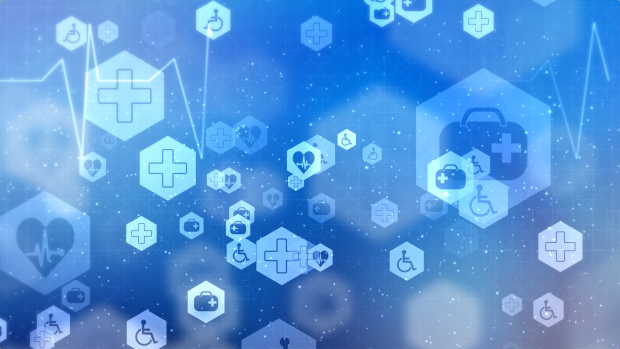
Engineers interested in using their skills to solve important health issues . . . clinicians seeking ways to improve patient care and outcomes. When the two groups join forces, it results in powerful translational work that can move from the lab into patient-care settings.
That type of lab bench-to-bedside work is being conducted every day at the NYU Tandon School of Engineering, where faculty members have forged strong ties with counterparts at the NYU Grossman School of Medicine, Langone Health, and other institutions. Read more about the translational and transformational research that’s leading to better ways to prevent, diagnose, and treat myriad conditions.
Synthetic biology and biomaterials

While most geneticists focus on a few thousand base pairs of DNA at a time, David Truong is thinking bigger. He’s building the technology necessary to change not just thousands but millions of base pairs.
Thanks to widespread news coverage, even laypeople have heard of CRISPR, a technology that allows researchers to alter short sequences of DNA and modify gene function, with the goal of one day correcting genetic defects and preventing disease. In metaphoric terms, if CRISPR lets researchers edit the equivalent of a sentence, Truong–who is working with human-induced Pluripotent Stem Cells (iPSCs), which have the potential to transform from an embryonic state into any type of cell needed, whether that be a heart cell, an immune cell, or a neuron–aims to let them write an entire book.

If you cut yourself, you will probably heal readily, since skin cells have the ability to regenerate. That’s not true, however, of the more than two billion cardiac muscle cells in the human heart, since most of those cells, known as cardiomyocytes, lose the ability to divide soon after we are born. That means that someone who suffers a heart attack, for example, will not grow new cells to replace those that die. Irene de Lázaro, who runs Tandon’s NanoBioEngineering for Tissue Reprogramming and Regeneration laboratory, is working to change that situation by investigating the mechanisms by which in-vivo reprogrammed cells contribute to regeneration; studying the impact of mechanical and biochemical controlled perturbations on cell plasticity and reprogramming; and engineering reprogramming factor delivery vectors that will allow for efficient, safe, and clinically translatable reprogramming.

Jef D. Boeke was recently named a Fellow of the National Academy of Inventors for “demonstrat[ing] a spirit of innovation in creating or facilitating outstanding inventions that have made a tangible impact on the quality of life, economic development, and the welfare of society.” Much of that impact stems from his foundational work on retrotransposition — the ability of genes to change position on chromosomes — in both yeast and mammalian systems, and his development of novel technologies in genetics, genomics and synthetic biology. By inserting synthetic chromosomes into yeast cells, Boeke and his fellow researchers use them as a model for understanding human genetics, and a platform for manufacturing medicines.
Additionally, he is studying non-coding DNA in the human genome, or “dark matter,” the function of which remains largely elusive. (Non-coding DNA represents 98 percent of our DNA as a whole, and current research reveals that individual variation in the non-coding genome plays key roles in many diseases such as neurodegenerative diseases, heart disease, and cancer.)
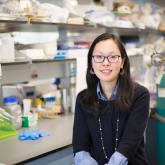
Jin Kim Montclare is performing groundbreaking research in engineering proteins to mimic nature and, in some cases, work even better than nature. She’s customizing artificial proteins with the aim of targeting human disorders, delivering therapeutics efficiently, and regenerating tissues, and among her recent accomplishments is developing a unique protein-based gel capable of minimally invasive, sustained delivery of pharmacologic treatment directly to the joints of patients with osteoarthritis.
Medical imaging techniques and analysis

Andreas Hielscher oversees the Clinical Biophotonics Laboratory at Tandon, where he focuses on developing new medical imaging technologies that use near-infrared light instead of more common X-rays or ultrasound. Light transmitted through the human body, he has explained, can provide information about the blood and oxygen supply in various tissues, and that information can be used by clinicians to diagnose and monitor various diseases–including breast cancer, rheumatoid arthritis, and peripheral artery disease (PAD) in diabetic patients.
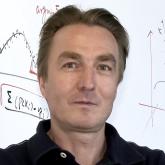
Guido Gerig is considered to be among the world’s foremost authorities in the field of medical image analysis, and his innovative methodologies – many of which are acknowledged to be the first of their kind – have been applied in a number of research studies on anatomical changes due to disease, therapy and recovery, as well as to such specific conditions as schizophrenia, autism, multiple sclerosis, and Huntington's disease.
For example, as part of the Infant Brain Imaging Study, a landmark project funded by the National Institutes of Health (NIH) to identify babies at risk for developing autism, he devised software that analyzed scans produced by Diffusion Tensor Imaging (DTI) to show that infants who later developed the condition exhibited early abnormalities in nerve connectivity. Recently, his efforts to quantify 3D dynamic morphological changes in the lamina cribrosa at the rear of the eye, as captured on optical coherence tomography (OCT) scans, has led to a greater understanding of the structural and functional changes that accompany glaucoma and could result in early prediction and diagnosis of the condition, which is the second leading cause of blindness worldwide.

Yao Wang is using machine learning to deliver strong medicine to health care research, diagnostics, self-therapy, and ultimately, prognosis. She has, for example, helped devise a way to detect and manage lymphedema, an incurable obstruction or disruption of the lymphatic system that is characterized by swelling of one or more limbs and that is common after breast cancer surgery, and has investigated the uses of machine learning for detecting and predicting the outcomes of mild traumatic brain injury (MTBI) using advanced MRI imaging.

Daniel Sodickson is a seminal figure in the development of parallel magnetic resonance imaging (MRI), which involves the use of radiofrequency (RF) coil arrays to acquire data in parallel rather than in a traditional sequential fashion and which enabled imaging at previously inaccessible speeds. His latest research involves using machine learning techniques to make MRI scans even quicker and thus less uncomfortable.
He is the founder of NYU’s Center for Advanced Imaging Innovation and Research, which is aimed at developing novel imaging technologies for the improved management of cancer, musculoskeletal disease, and neurological disease — and at getting those innovations quickly from lab bench to patient bedside.
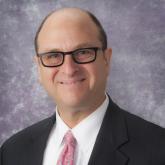
Joel S. Schuman’s research interests include the imaging of the eye and visual system, regenerative ophthalmology, aqueous outflow, and laser-tissue interactions, and he achieved renown as a creator of optical coherence tomography (OCT), a non-invasive, high-resolution in vivo imaging device for the diagnosis and management of eye disease. OCT is now considered the standard of care worldwide, making Schuman a revered figure in the world of ophthalmology. And if that’s not enough, he and his team were also the first researchers ever to identify a molecular marker for human glaucoma.
Among his more recent projects is the use of visible light OCT (vis-OCT) — a tool that allows for improved imaging resolution — and he’s also exploring the relevance of deep-learning techniques to medical imaging and new methods of applying 3D processing techniques to OCT data.

Ivan Selesnick is an expert in digital signal processing, among other areas, and he and his team have developed new signal processing algorithms for numerous types of data and applications — including such biomedical imaging methods as near infrared spectroscopy, optical coherence tomography, magnetic resonance imaging, digital x-ray imaging, electrocardiography, and electroencephalography.
Working with medical researchers, he discovers problems in data analysis and finds ways to apply algorithms to projects of great potential benefit to patients. One of those important projects has involved the development of a new algorithm that boosts the accuracy of the King–Devick (KD) test, an assessment based on eye movement that is frequently used to screen sidelined athletes for possible concussion.
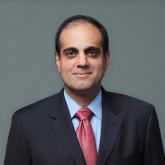
Samir Taneja focuses on the use of MRI to improve methods of prostate imaging, cancer detection, disease localization, and treatment, and his work has transformed the field. He has overseen several clinical trials of innovative techniques for prostate biopsy and targeted focal treatments, including the first randomized study of MRI to ultrasound fusion biopsy and the first multicenter United States trial of prostate cancer focal therapy.

On the path to becoming Dean of NYU Tandon, Jelena Kovačević showed a wide range of scholarship, applying data science in various domains, including medicine. One of her research endevours involved using algorithms to help doctors distinguish between middle-ear infections in children that require antibiotics and those that don’t, and she is an authority on multi-resolution techniques, such as wavelets and frames, which can be applied to signal processing and data analysis.
She was the recipient of the 2022 IEEE Engineering in Medicine & Biology Society Career Achievement Award for pioneering academic leadership in biomedical imaging research and education.
Neuroengineering
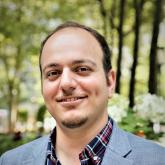
Stroke is the leading cause of age-related motor disabilities and is becoming more prevalent in younger populations as well. But while there is a burgeoning marketplace for rehabilitation devices that claim to accelerate recovery, including robotic rehabilitation systems, recommendations for how and when to use them are based mostly on subjective evaluation. S. Farokh Atashzar is collaborating to design a regulatory science tool based on data from biomarkers in order to improve the review processes for such devices and how best to use them; another project, called EyeScore, tackles the issue of strokes through a different lens, by developing a technology that uses non-invasive scans of the retina to predict the recurrence of stroke in patients.

Advances in miniaturized sensors and actuators, as well as artificial intelligence (AI), have broadened horizons for assistive and rehabilitative technologies, and John-Ross Rizzo is leveraging these innovations to help patients with conditions such as blindness and stroke, enhancing their ability to interact physically with their environment.
Among his many areas of expertise are eye-hand coordination as it relates to acquired brain injury, advanced wearables for the sensory deprived, and–in general–advancing the assistive technology space for those with visual impairments.
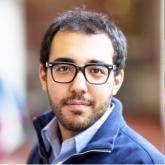
Khalil B. Ramadi and his collaborators have developed a tiny pill-like electromagnetic device that, once swallowed, could provide medical professionals a diagnostic window into the inner workings of the gastrointestinal (GI) tract. The bluetooth-enabled device delivers a continual stream of data to a smartphone as it passes through the subject, using electromagnetic technology similar to what makes Magnetic Resonance Imaging machines work.
This breakthrough means that the more than one-third of the global population with irritable bowel syndrome and other disorders related to motility — the functioning of muscles and nerves in the GI tract — could avoid uncomfortable diagnostic procedures like computerized tomography (CT) scans, X-rays or endoscopic tubes inserted through the nose or other entry point.
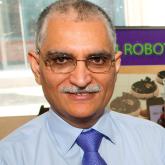
Recent years have seen a brisk rise in development and deployment of digital health systems using such technologies as wearable sensors and embedded controllers to enhance access to medical diagnostics and treatments. Because of an accelerating trend in the number of stroke survivors requiring rehabilitation, healthcare services worldwide are considering technological solutions to enhance accessibility to assessment and treatment, particularly during the past year’s period of enforced quarantine due to COVID-19. Some of the challenges faced by these technologies are clinical acceptance, high equipment cost, accuracy, and ease of use.
To address these limitations, Kapila and his fellow researchers designed a system that includes an animated virtual coach to deliver instruction, and a subject- model whose movements are animated by real-time sensor measurements from the subject.
Targeted treatments

Thorsten Kirsch studies the novel mechanisms involved in regulating cartilage homeostasis, maintenance, and pathology, with the ultimate goal to define novel therapeutic targets for the treatment of osteoarthritis. In addition, he is studying how cells and the environment in the joint communicate to maintain organ health–and how such communication networks are altered in the event of joint diseases or injuries.
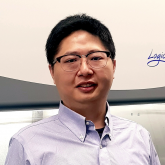
Cytokine Release Syndrome is an overwhelming systemic immune response often seen in patients suffering from COVID-19. While this inflammatory response to germs, often called a “cytokine storm” can prove fatal, it also demonstrates the power of these small proteins secreted by lymphocytes to direct the body’s immune response to specific cells. Weiqiang Chen has helped harness the power of cytokines, focusing on insights that could optimize modified T-Cell lymphocytes for the immunotherapeutic treatment of cancer.
More recently, he has applied biomechanical engineering to the study of aneurysm pathology; in contrast to the extensive study of aorta wall properties, his team explored how a cell’s mechanical sensitivity, or mechanosensation, to mechanical stimuli presents an innovative perspective in revealing disease pathogenesis and progression–research that could lead to new approaches to treating devastating cardiovascular disease.

Nikita Grigoryev is immersed in the study of glioblastoma, the deadliest form of brain cancer. Glioblastoma tumors can be excised, but the aggressive cells that escape the scalpel end up killing the vast majority of patients within five years of diagnosis. Previously, there was no effective way to study the spread of glioblastoma cells; in vivo experiments involving live animals came with a set of ethical dilemmas, and the brains of mice do not, at any rate, exactly mimic those of humans.
Grigoryev has engineering an artificial scaffolding that enables cells from glioblastoma patients to grow in the lab to be studied. The process of building such scaffolding consists of electrospun nanofibers that are embedded in a clear hydrogel, closely mimicking the cells’ natural environment. Because the hydrogel is transparent, researchers can easily distinguish between the original cells and the newly grown cells, tracking them, studying their gene amplification, and giving new hope to patients.
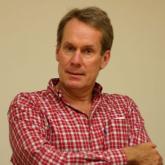
Kalle Levon is an expert in the field of organic electronics, with particular interest in medical diagnostics. Using organic electronics as early-stage cancer markers, Levon focuses his efforts on assisting medical doctors with point-of-care diagnostics. His research involves surface imprinting as an antibody mimic for detection of target molecules of less than 30nm of size, genetic Identification, and the monitoring of protein interactions.
Wearables

Rose Faghih has developed a technology that can measure mental activity using electrodermal activity (EDA) — an electrical phenomenon of the skin that is influenced by brain activity related to emotional status. Internal stresses, whether caused by pain, exhaustion, or a particularly packed schedule, can cause changes in the EDA — changes that are directly correlated to mental states.
The overarching goal — a Multimodal Intelligent Noninvasive brain state Decoder for Wearable AdapTive Closed-loop arcHitectures, or MINDWATCH, as Faghih calls it — would act as a way to monitor a wearer’s mental state, and offer nudges that would help them revert back to a more neutral state of mind. (For example, if a person was experiencing a particularly severe bout of work-related stress, the MINDWATCH could pick up on this and automatically play some relaxing music.)
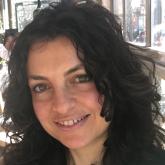
A holy grail for orthopedic research is a method for not only creating artificial bone tissue that precisely matches the real thing, but does so in such microscopic detail that it includes tiny structures potentially important for stem cell differentiation, which is key to bone regeneration.
Elisa Riedo and her collaborators have taken a major step by creating the exact replica of a bone using a system that pairs biothermal imaging with a heated “nano-chisel.” Her system allows her to sculpt, in a biocompatible material, the exact structure of the bone tissue, with features smaller than the size of a single protein — a billion times smaller than a meter. This platform, called, bio-thermal scanning probe lithography (bio-tSPL), takes a “photograph” of the bone tissue, and then uses the photograph to produce a bona-fide replica of it.
Her research has revealed that it is possible to scale up bio-tSPL to produce bone replicas on a size meaningful for biomedical studies and applications, at an affordable cost. These bone replicas support the growth of bone cells derived from a patient’s own stem cells, creating the possibility of pioneering new stem cell applications with broad research and therapeutic potential. This technology could revolutionize drug discovery and result in the development of better orthopedic implants and devices.
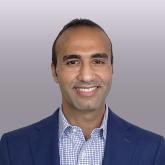
Davood Shahrjedi has helped discover a new way of enhancing the performance of electrochemical micro-sensors. This discovery could lead to the detection of biomolecules, such as dopamine, at lower concentrations than is possible today.
Dopamine molecule activity in the brain is associated with important functions such as motivation, motor control, reinforcement, and reward. Researchers and clinicians commonly monitor neurotransmitter activity in the brain through electrochemical micro-sensors made of carbon. However, due to their limited sensitivity, existing micro-sensors can detect only large changes in dopamine levels. They can also record from only one site in the brain at a time.
To support the multi-site mapping of dopamine activities in the brain, Shahrjerdi and his team developed planar micro-sensors using a carbon nanomaterial, called nano-graphitic carbon. They used nanofabrication techniques, similar to those used for building chips in consumer electronics, to create an array of many planar electrochemical micro-sensors, comparable in size to a neuron cell body — and with the ability to be packed close to each other for recordings with higher spatial resolution.
AI and data science for digital and public health

As the director of NYU’s Center for Health Data Science, Rumi Chunara is driven by themes of public health and equity. These themes have led her to focus on the design and development of data mining and machine learning methods to address challenges related to data and goals of public health, and issues of fairness and ethics in the design and use of data and algorithms embedded in social systems. Her goal in uncovering disparities in healthcare among various groups is, ultimately, to inform tool design and systemic efforts to promote health equity.
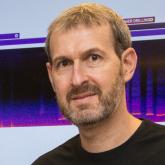
Many errors in drug ordering are caused or worsened by the intricacies of the electronic health records (EHR). These problems often stem from mistakes made at the point of the clinician–computer interface. To avert the resulting risk, Oded Nov has helped design an AI-based system that can flag errors going just by the ordering clinician’s behavior and the context in which it occurs. The innovation may not only reduce prescription-drug errors but also relieve pharmacists’ workloads while better ensuring patient privacy and security.
In another healthcare-related project, he conducted a broad investigation into how to best bring inclusive tech into the clinic, empowering healthcare workers to take advantage of data-driven research and improve health outcomes for patients.
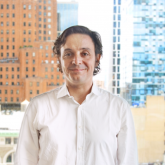
The United States experiences a staggeringly high rate of gun homicides, but accurately predicting these incidents – especially on a monthly basis – has been a significant challenge, due to the lag in the release of official Centers for Disease Control and Prevention (CDC) firearm mortality data, which is a cornerstone of reliable gun research.
A new methodology co-developed by Maurizio Porfiri revealed that, by combining CDC data with data from a range of other sources, they created a model that outperforms the techniques currently in use to predict monthly gun homicide rates. (Some of the researchers’ other data sources were city police departments, news stories, and the crowdsourced Gun Violence Archive database.) Policy makers and practitioners often use outdated or limited data to make decisions around gun violence reduction strategies, obviously a less-than-ideal situation when precision is a goal, Porfiri has explained, but his model may be used to fill data gaps and anticipate outbreaks of violence, thereby offering a concrete aid to evidence-based interventions.
Mechanobiology

In the Castillo Laboratory for Mechanobiology and Regenerative Medicine at Tandon, Alesha Castillo conducts cutting-edge research in skeletal mechanobiology and regeneration, investigating mechanisms that trigger the release of mechanochemical signals from bone cells which control skeletal stem cell function. With the ultimate goal of repairing injured bone tissue, Castillo’s findings could have an incredible impact on orthopaedic rehabilitative medicine by speeding up the healing process in bone injuries sustained by combat troops and veterans, or strengthening tissue in the aging population.
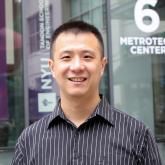
Xiao Ma’s research focuses on mechanobiology, cellular morphogenesis, computational biology, cellular mechanics, molecular biophysics, cancer biology, smart biointerface design/characterization, and the application of micro/nanofabrication technology to manipulate biological system from both molecular and cellular levels.

It wasn’t too long ago that the idea of a wearable robot that would lend its user increased mobility and strength seemed like the stuff of science fiction; indeed, films like Aliens and Iron Man, which featured characters wearing powered exoskeletons, incited the imaginations of many. Today, those exoskeletons actually exist and are available commercially, but they pose several problems. They take a long time to design and fabricate, for example, and the models, while costly to create, can be ill-fitting.
Joo H. Kim is addressing those issues, conducting research that has particular utility for those with disabilities affecting the lower limbs, but that could also help military personnel and people in the construction industry who need to carry heavy loads over long distances.
He is establishing a user-centered design framework for powered lower-extremity exoskeletons, in which human-exoskeleton physical interactions and dynamics can be predicted and optimized. Based on an initial design that was developed by IHMC and NASA, the research includes mathematical models of performance and stability control integrated into the design, resulting in accelerated development and better performing assistive devices at reduced cost.




